Resources / How Much Should You Spend on Marketing as a Medical Practitioner
Learn how to plan your marketing budget and optimize the marketing spend for your medical practice. Find answers to frequently asked questions

Harshal Limaye
Published On: December 2, 2020

To get the PDF version of this eBook, click the button below

“How much to spend on marketing?”, is the most popular question our clients ask us. In this e-book, we will discuss how much should a medical practice spend on marketing and also how should you spend it. But before we dig into this, you need to think about marketing as an investment. It is an investment to grow your marketing assets. You need to give it time and put in some money to build your marketing assets. Your marketing investment depends on what stage you are in the Practice Life Cycle. You also need to set objectives for this investment, be able to track the performance of your marketing strategies, and measure the return on your marketing investment. We will also discuss which are the best platforms for running ads and how to optimize your ad spend across those platforms. Lastly, we will address questions related to sustaining your medical practice during the Covid-19 pandemic and other frequently asked questions about marketing for medical practices.
Think about marketing as an investment. Just like you’d make investments to build financial assets and grow your wealth, marketing is an investment to build and grow your medical practice.

Investment
What is a Marketing Asset? It is any valuable property owned by your business that benefits the operations of your practice. So marketing assets are anything used by your practice to promote the products and services that you offer to patients.
There are four essential marketing assets that every practice should build, grow and invest in.
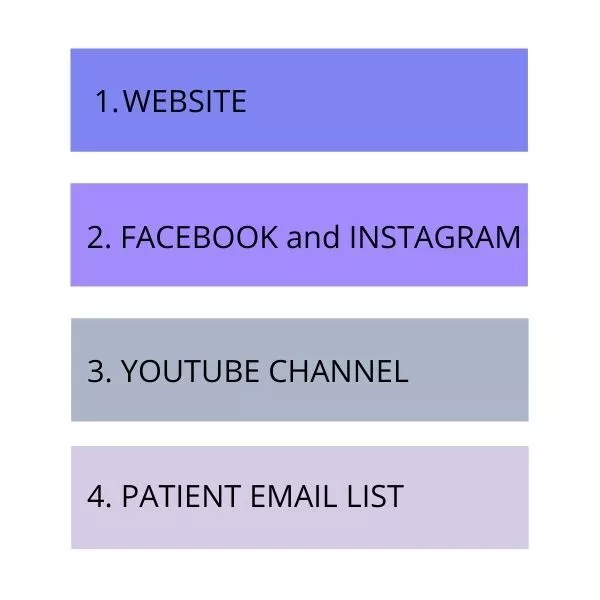
Marketing-Assets
Your website is the single most vital marketing asset for your practice and it’s the first impression for a new patient. Make it count! Your website should be aesthetically stunning, secure, fast, mobile-optimized, and overall provide the best in class digital experience for your patients.
Your Facebook/ Instagram page and YouTube Channel is a way of creating a web presence. The content you share on these pages can help build your brand. You also need to build an email database or patient list.
These assets are essential for creating a good marketing strategy and you need to put in the time and money to build and grow them.
How to Make Good Investments in Marketing?
Just like you have made some good and some bad financial investments, in marketing also some investments will be good and some will be bad. And if you were to believe or your agency tells you that “you’ll only make good investments” then I’m sorry to break it out to you that this is not the complete truth – and you know that. So what is important is to pick the good from the bad and understand the process of how to do this.
Characteristics of Marketing Investments :
Marketing investments are quite similar to financial investments.
The Business Life Cycle The 4 Stages of the Business Life Cycle or Practice Life Cycle are:
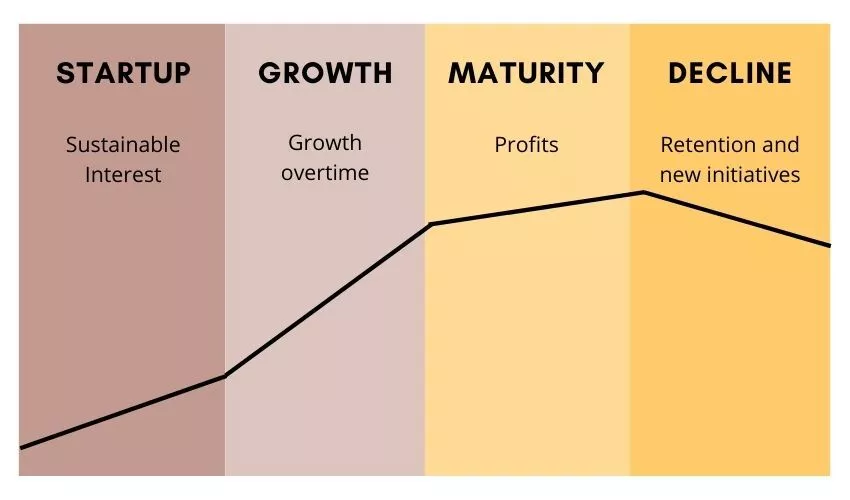
The-Business-Life-Cycle
The very first stage of the practice life cycle is the Startup stage. In this stage, you are trying to introduce your brand in the marketplace. Therefore, it is important for you to check if there is a sustainable interest in your business.
At this stage, you have recognition in the market and your practice is growing. Therefore, the Growth stage is concerned with tracking growth in revenue over different periods of time like month-over-month or year-over-year.
In the Maturity stage, your service performance is at its peak. Here, the focus is on Profits, Return on Investment (ROI), and Lifetime Value (LTV) of the patient.
The last stage of the practice life cycle is the Decline stage. Here your practice experiences saturation in the market resulting in low sales of your services. Therefore, you should focus on retention and new growth initiatives to sustain in the market.
The short answer to it is that there is no standard formula; there is no set number that works for everyone. But there is some rule of thumb that you would typically spend. On average, you should spend about 10% to 15% of your projected annual revenues or total annual sales. You may spend less than 10% or more than 15% depending on certain factors.
Take a look at the lifecycle of your practice. Are you a 0-2-year-old practice, or a growing practice that has been running for 3-5 years, or a mature one 5-10 years into business? Your budget varies depending on what stage you are in the practice life cycle.
Your marketing budget also depends on the specialties or services that you provide. In the USA, the average budget of a plastic surgeon is $7000, while it is $4500 for medspa and aesthetic practices.
What is the location of your practice? If you are in a city like Mumbai (India) there is going to be fierce competition and you have to factor that into your budget.
How many providers do you have in your practice? Are there sole practitioners who are doing everything or do you have more than one doctor on board? If there are multiple practitioners, you can take more patients. Hence the budget can be adjusted based on your patient intake.
Let’s dive a little bit more into the business life cycle.
What stage are you in your practice?

The-Business-Life-Cycle
If you are at the startup stage of your practice, the most important factor to consider is whether this practice is sustainable in the market that you are operating. Assess yourself against your competition, compare the services you offer, and check if you will be able to sustain interest in this business in the long run.
In the growth phase, you are concerned about tracking your revenues (the top-line). You need to check how much are you making every month, month-over-month, and year-over-year.
The next phase is the maturity stage in your practice life cycle where you need to focus on profits, the returns that you are getting, and what is the Lifetime Value (LTV) of a patient that you are creating. You will learn more about the ROI and LTV in the coming chapters.
The maturity stage is followed by the declining stage. For example, a multi-clinic practice may not be able to keep all the clinics open. This is the decline stage of that practice as revenues go down. The focus at this stage is on the retention of your current patients, new growth initiatives, change the revenue model (like starting a retail revenue – maybe selling products online).
You must understand how you fit into this business life cycle before you even think about what budget you want to spend on marketing because you need to manage your money in a different way at every stage.

medical-practice-life-cycle
The numbers represent practices in the US; you can relate them to your practice location
The figure gives you a template of where you would spend your money.
Suppose you are between 0-2 years (Tier I) of your practice in the US and your income is around half a million dollars or a million dollars. At this stage, you would spend on your core assets (your Website, Search Engine Optimization (SEO), your Facebook page, or Instagram page, and your YouTube channel). Most of your marketing spend will focus on building these assets because these are for the long term.
You could also think of doing email marketing as it is inexpensive as well as PR in case you are just opening up. You may also want to think about investing in some kind of marketing software to make your operations run smoothly.
A practice that has been running for 3-5 years pulls in about a million or two million dollars of revenue. You can spend around 15% of it on Google ads and/or Facebook ads. You may also start spending on your social media marketing and start doing marketing automation. So you do everything that you are doing on Tier I, and add on these activities at Tier II.
At Tier III, mature practices that have been running for 5-10 years draw revenue between three million to five million dollars a year. Again, you do everything that you are doing in Tier I and Tier II, but you could add more money to the ad spend. You may even spend on TV commercials at this stage because these are expensive and can probably afford them since you have good revenue and a good budget. You may spend more on PR, or go to news channels, even spend on more billboards.
The following examples are purely based on our research on the kind of spends that a dentist, medspa, or a plastic surgeon or dermatologist would do in the US.
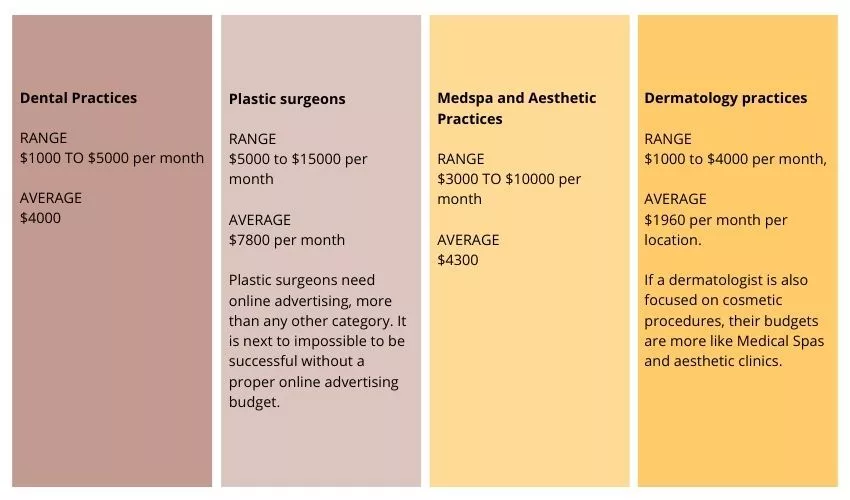
Marketing-spend-based-on-medical-practice-specialty
A good rule of thumb is to fix your marketing budget at 10% of your total sales or between 7-12% depending on the revenue generated.
The examples show benchmark numbers that we have identified from our research and data gathered from our clients. They can help you set your goals relative to your practice location.
Dentists spend $4000 a month on average. Medspas and aesthetic practices spend between $3000 to $10000 per month with an average budget of $4300.
Plastic surgeons spend more since their ticket sizes are even bigger. You get a breast augmentation done in the US which costs anywhere between $6000 to $10000. So obviously, they spend much more on marketing than the Medspas.
Many dermatologists are getting into aesthetic procedures or cosmetic procedures. In that case, your budget is going to look more like the Medspa budget.

square-media
Before you spend any money on marketing, you need to know what your marketing objectives are. Read on to understand what marketing objectives are and how to set SMART objectives for your practice.
When you are planning your marketing budget, you need to set certain goals or objectives which you want to achieve through the marketing plan. They are checkpoints to help you track where you’re spending.
Examples of Marketing Objectives:
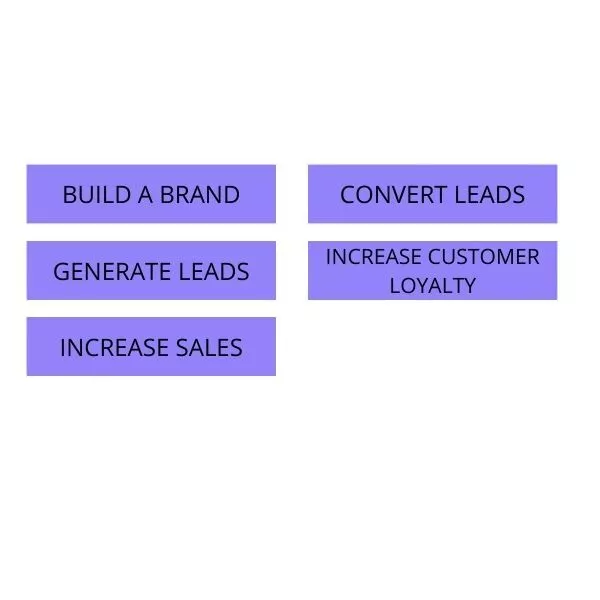
example-of-marketing-objective
You can set different marketing objectives as per your practice. If you’re a new practice, you will want to increase your sales. So you need to build your brand, create awareness, and generate leads. If you’re in the growth phase, the focus will be on increasing your revenue, thus your efforts will be directed towards converting your leads. It will help you to increase your customer loyalty.
Each of your objectives should be Specific, Measurable, Achievable, Relevant, and Time-bound. Do not spend any money unless you have set your marketing objectives. When you’re setting marketing objectives set in such a way that it’s SMART.
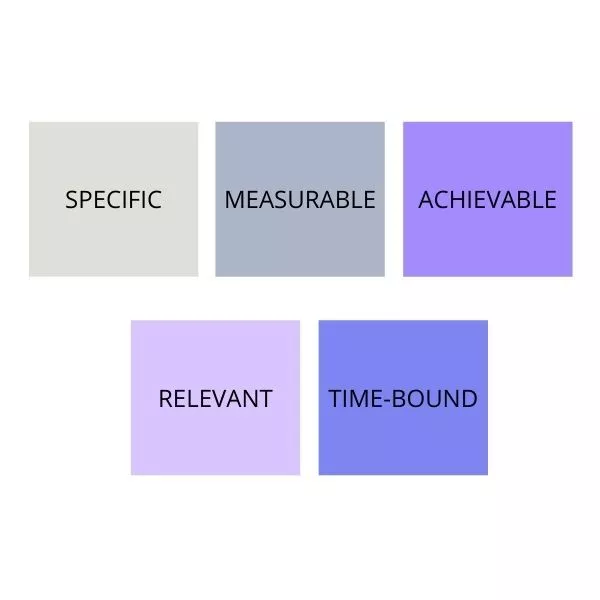
SMART-Objective
It should be sufficiently detailed and not ambiguous. You should understand what the objective is and what it means to your business or your practice.
If you cannot measure against that objective then basically you can never tell whether you succeeded or not.
Objectives should be such that you can achieve that using different kinds of marketing strategies.
Objectives should be relevant to your business and they should matter to your practice.
When you set a SMART objective, it is important that you set it for a specific period of time like a month, a quarter, or a year. You should be able to measure against it.
Some examples of SMART marketing objectives are:
Average 1000 monthly organic website visitors in 3 months. You want to create your brand and your objective is to have a thousand monthly organic visitors to your website in the next three months. Here, you are very specific about what you are trying to achieve. You’re objective is time-bound and it’s measurable as you’re putting a quantity against it.
Rank on the 1st page for Liposuction and related keywords in 6 months. Here your objective is to rank on the first page of Google for liposuction or for any liposuction related keywords. The objective is achievable, measurable, and is time-bound.
Other examples of SMART marketing objectives are:
Once you set your SMART objectives and keep aside some money to spend on marketing, the question that arises is how do you measure if your marketing campaign is successful or not?
The tool used to measure it is called Key Performance Indicators (KPIs). It’s not just used in medical practice but also in any business across all departments.
A Key Performance Indicator is a metric or a value that demonstrates how effectively your practice is performing and achieving the marketing objectives.
Examples of KPIs:
Tip: Identify your marketing objective; select your primary KPI to measure against that objective and then map your metrics to your KPI so that you can measure and see the progress.
If you look from the bottom up and look at metrics, it will tell you the story behind your KPI.
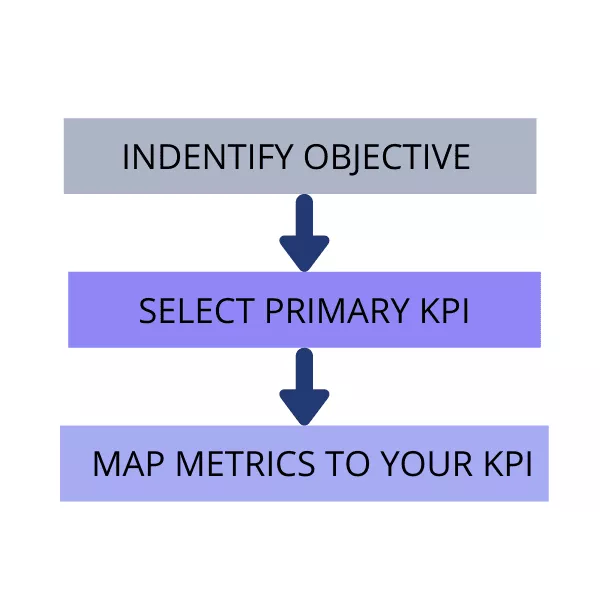
eBook-1
For example, if your objective is to generate X number of leads in a month and the primary KPI for that is the total number of leads that were generated in a month. Then the metrics could be:
While analyzing the performance of the marketing spend, some people use metrics like cost per lead and cost per conversion. But what really matters is the cost of acquiring a patient. Patient Acquisition Cost is the cost incurred to acquire each new patient.
Number Of Leads – X (let’s say 20) Leads Converted To Patients – P (let’s say 5) Marketing Campaign Cost – C (let’s say 3000) Patient Acquisition Cost = C / P = 3000 / 5 = $600
Let’s say you ran an email campaign (or Google/ Facebook campaign) and the marketing objective was to generate leads.
How do you calculate the Return on your Investment (ROI)? Let’s say you get a patient for Botox and fillers and he/she spends hundreds of dollars on it and keeps coming back for treatment. Similarly, orthodontic treatments can keep clients coming in once a month.
You can estimate how much this patient will spend with your practice in a year. This is the Lifetime Value of the patient (LTV) – the total amount that your average patient spends with you annually.
Patient Acquisition Cost – PAC (let’s say $600)
Lifetime Value of the patient – LTV (let’s say $2000)
Return On Investment (ROI) = LTV / PAC = 2000 / 600 = 3.33
Your marketing strategy needs to be effective so you can convert maximum leads and thus get maximum return on your investment.
Another popularly asked question is “How do you maximize your ad spend?”. Typically you would be running ads on Google (pay-per-click ads) or on a social platform like Facebook ads.
Google and Facebook are great advertising platforms to precisely target your patients on the internet while they are searching or while they are engaging on social media.

Marketing For Medical Practice
Google is a great platform for lead generation. A typical patient journey starts with Google. People actively search for things, they see your ad, click on it and come onto your website and may eventually become your patients.
For example, they search for “what does liposuction mean”. That doesn’t necessarily mean that they want to get liposuction though they’re ready for the treatment. They might just want to learn about the procedure. These keywords are called non-transactional where you could get some clicks from them but may not convert into patients.
On the other hand, when someone searches “cost of liposuction surgery” the purchase intent of the person is clear. These are transactional & long-tail keywords. Your focus should be on transactional and long-tail keywords since Google is an intent-based platform. If you use it the right way you will be successful in converting leads into patients through Google ads.
Facebook is a great platform for branding or storytelling. Keep in mind that your audience is just browsing through the social platform when they see your ad. So ad copies should be interesting enough to keep the audience engaged.
Facebook has evolved as a platform where you can generate leads and even have conversions. When you are running Facebook campaigns, the conversion can be in the form of downloads. For example, downloading some brochures related to your practice.
Optimize your marketing spend across the right mix of channels across Google and Facebook to build your brand and drive conversions.
Facebook knows your interest graph, it knows what people like, what people don’t like, from where people have checked in, where people visit, what food they eat, what dishes they cook, what store they visit, what movies they watch, and much more. So you need to carefully target your audience based on their interests and demographics when running campaigns on Facebook.
On the other hand, Google is a knowledge graph. People are searching to get more information. All of the data that has been collected from these millions of web searches is evaluated.
If you understand these platforms well, you will be able to figure out how to optimize the spending between the two.
Another great tactic is to do cross-platform advertisements.
When someone is searching on Google, they see your ad and they go to your webpage. Build a database from this traffic and retarget the audience through Facebook ads because you know that they’ve visited your website, which means they are prospective patients.
Mktg.Doctor provides you a platform to check the performance of your ad campaigns, cost per conversion, and ROI. You can easily track all your metrics whenever you want and from any device you want.
When patients go for surgery today in this kind of scenario, there’s a lot that patients have to go through. They need to get tested for covid, make sure that they self-quarantine before the surgery and after the surgery. This causes a lot of friction in terms of people opting for elective surgeries during this period.
Here are 3 tips to help you sustain your practice through the Covid-19 crisis:
Re-evaluate where you fit in the practice life cycle
Things could have changed for your practice. If yours is a multi-clinic practice, you need to think about whether you want to continue running all those clinics or close one down. A hair loss clinic may not get surgeries any time soon for a hair transplant. Therefore you need to focus more on minimally invasive things like PRP or Vitamin Therapy or Intravenous (IV) Therapy. A client of ours, who is a plastic surgeon, decided to focus just on very advanced aesthetic surgeries and IV, cellular, wellness kinds of therapies.
So this is the time to go back and reevaluate where you fit in the business cycle and adjust your business model for this particular scenario.
Revisit your Marketing Objectives, Primary KPI and Metrics
Since your business model is going to change, it will affect your revenue and cost structure among other things. Revisit your marketing objectives to incorporate these changes. Also, revisit your Key Performance Indicators (KPIs), and the metrics that you are currently using to measure your practice performance.
Invest in your assets
Take a look around and you’ll see that brands are pulling out of ads. It’s a good time to run some ads now since the ad rates are lower than usual. Invest in building your assets- your website, social media pages, YouTube channel, and your patient list or email list. Employ value media to get the best return for your dollar.
The difference between print media and digital media is that in print media you cannot target and measure accurately. In the digital world, you can precisely target your patients and can measure the returns. If yours is a mature business and you have a good marketing budget, you can go ahead with print media. There’s no set number or percentage of how much you should spend on digital or print media. Marketing is, after all, an investment. If you’re getting more returns from print media then go ahead with that. Ultimately you need to invest in what works best for your practice.
In terms of advertising, there are limited things that you can do in these times.
Let’s say you are a dermatologist, you can give virtual consultations and prescribe medicines to patients. If you are a plastic surgeon, you cannot do any surgeries in these times. However, this is an opportunity to grow your lead pool. You’re answering the patient’s questions and giving them consultations. When you’re offering these kinds of services, your patients are going to come back to you when things open up because you’re building that relationship with them. If you are an aesthetic practice and if you can sell some products online, you should spend on advertising to promote those products where people can go online and buy them.
As a surgery patient, the cycles are longer. If someone is trying to look for a cosmetic procedure, they’re gonna do a lot of research because they’re gonna spend a lot of money on the surgery.
If you can spend on social media marketing (not advertising) you should prioritize publishing posts, getting engagement with your patients, educating them on different procedures, and cross-promoting certain services. In these times your patient pool is going to shrink. So you have to make sure that you also shrink your services and try to narrow down on things that you are the best.
There is still a lot of potential for aesthetic medical practice. But due to the covid situation, everybody is going to face a slide down. Focus on things that you do the best and you will get the results.
The selection of platforms for marketing depends on your target demographic. For example, people who need hair loss treatments, maybe they’re a little older and are found mainly on Facebook. Whereas, people who are facing acne problems are teenagers and they are most likely to be on Instagram. Hence, based on your demographics, you should choose the right platform. Although Facebook gives you an option to run the ads on Instagram as well either automatically or by opting for it.
It is not possible to grow a business without marketing. Marketing is a core aspect of any business that you run. While advertising is just one piece of the whole marketing plan. Therefore, you need to do marketing and focus on building your digital marketing assets.
Invest in your website, it is the single most important marketing asset. If you don’t have a website, nobody can come to you online, and nobody can know you online. Whether to invest in ads or not depends on what you are into right now. Since you’re not providing services right now, there’s no point in running any ads at this point. Instead, you could run ads for creating brand awareness.
Remember marketing is an investment and your assets are your website, Facebook page, YouTube channel, and database. The main strategy you need to follow is to build and grow these assets. There are good investments and bad investments. During this period you need to realize what you are going to invest in. Even if you’re not providing any services, you don’t need to spend on ads but you have to spend on marketing, which will include your SEO, Website, Content, and Database building, as those things are still required.
Search engine optimization (SEO) is needed to rank your website on Google’s first page. It helps you bring traffic to your website. You can see the return on investment in the form of the time people are spending on your website when they come from the organic traffic, the kind of forms they are filling out, the types of leads that are generated from that traffic, and the number of leads getting converted.
The return on your investment in SEO can be calculated using the formula (Gain from Investment – Cost of Investment) / Cost of Investment.
There are some DIY platforms like the WIX platform where you have the drag and drop facility and it’s a good way of getting started. But remember, your practice is a little different from other small businesses.
For example, for small restaurants, you would just need to create the website once and have an online presence. But your practice is different, it’s continuously evolving. You need to share some patient stories, upload before and after pictures, and showcase your approaches and different services that you offer.
Therefore, you should spend a little bit more time and money and hire the right agency instead of doing it by yourself.
Advertising is just one part of your marketing strategy. When planning your marketing budget, think about your whole marketing strategy. That includes email marketing, content marketing, apart from running ads on Google and Facebook.
Similarly, reaching out to patients and asking for a review or feedback is a routine activity to track patient satisfaction. It is, thus, a part of your marketing strategy and is not advertising per se.

CEO & Founder, Mktg.Doctor
LinkedIn – @ Harshal LimayeHarshal Limaye runs Mktg.Doctor, an all-in-one digital marketing platform that leverages 360° marketing strategies to acquire new patients, re-engage existing patients, improve patient’s experience, streamline your front desk, and justify your marketing spend. He is a Certified Aesthetic Consultant from The Aesthetic Academy USA.
Get step-by-step instructions & insights about what works (and what does not) on social media.
In this blog, we have showcased the types of videos you can post on your Instagram, and the best practices for every type.
In this blog, we talk about Google Search Console, what it is and how it can help you optimize your website for better visibility in search engine results.